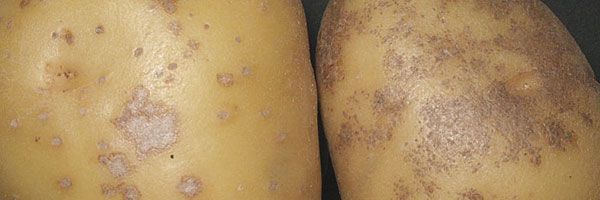
Helminthosporium solani
(Silver scurf)
- Causal agent and transmission
Silver scurf is caused by the fungus Helminthosporium solani. There is no visible symptom on foliage during the growing season. However, at the end of the growing period, the fungus causes blemishes and silvery lesions on the tubers.
The pathogen is transmitted by infected seed tubers or, in rare cases, by the soil where the fungus is able to survive on dead and decaying organic matter, potentially subjecting a subsequent potato crop to a new cycle of infection.
During storage, the disease can develop if the temperature and humidity are favourable.
The optimum temperature lies around 20- 25°C but the fungus is capable of developing from 5°C onward.
- Significance
Silver scurf is a common disease of potato tubers but its direct effect on yield can be counterbalanced by adequate fertilisers and good irrigation management. It can cause tubers to shrivel during storage, and thus reduce their marketability.
Moreover, when fresh ware tubers are washed before selling, silver scurf, a surface-blemishing disease, may downgrade the tuber aspect, and thus the marketable yield and induce economic loss.





